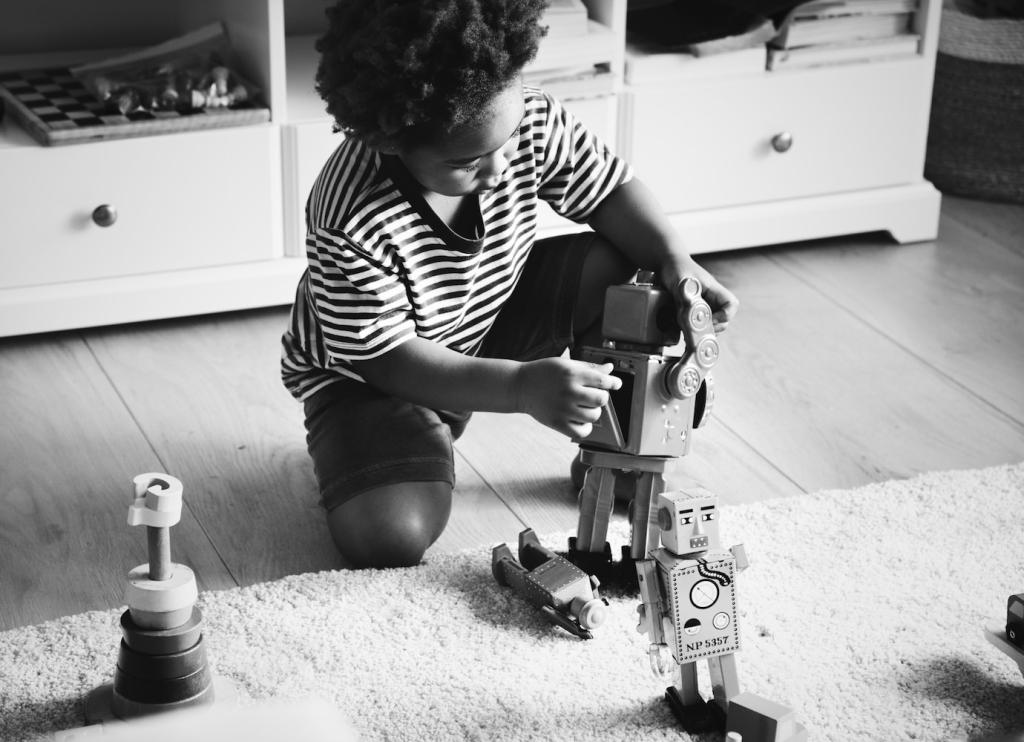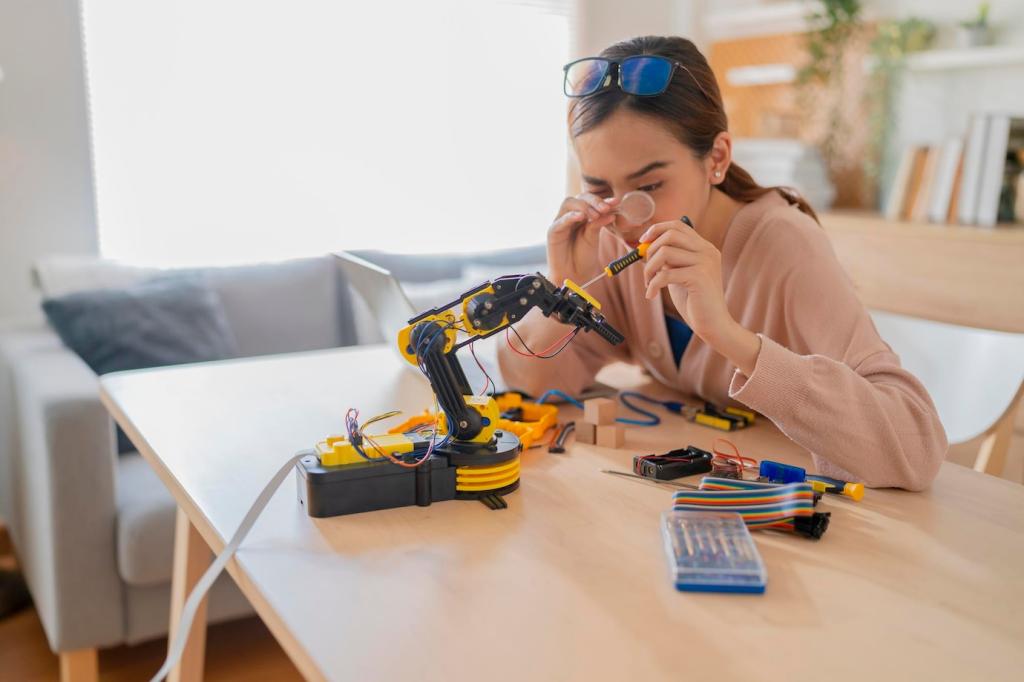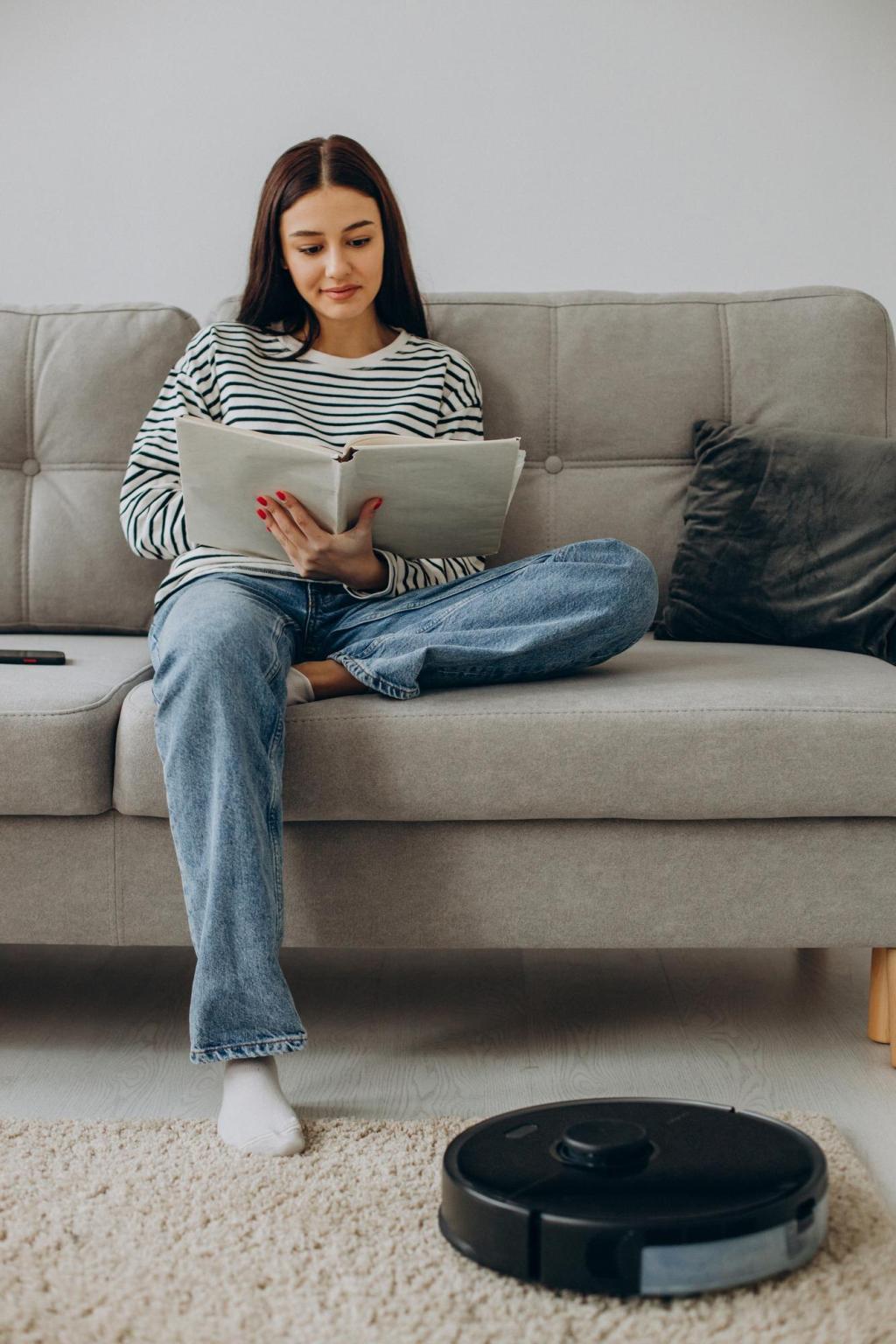Top Robotics Tools for Kids at Home
Choosing Age-Appropriate Robotics Kits
01
For preschoolers and early readers, robots that use physical cards, dials, or simple buttons build logic through play. These kits turn coding into storytelling, encouraging sequencing and patience without screens. Ask your child to narrate the robot’s “adventure” and celebrate each small discovery.
02
Magnetic or snap-fit modules help kids focus on ideas instead of wiring. Color-coded blocks for motors, LEDs, and sensors make experiments fast and reversible. Encourage playful iteration: what happens if we swap a light sensor for sound? Invite them to predict, test, and reflect.
03
Arduino, micro:bit, and Raspberry Pi open doors to real coding and electronics. Choose starter kits with clear projects and reliable documentation. Let older kids own the roadmap, from line-following robots to AI vision add-ons. Subscribe for weekly challenges that push skills one notch further.



Seeing the World: Light, Distance, and Touch
Start with a light sensor that wakes LEDs at dusk, or a distance sensor that stops a rover before collisions. Relate it to daily life: night-lights, automatic doors, gentle alarms. Ask kids to journal predictions and compare them with actual readings to sharpen scientific thinking.
Moving with Purpose: Motors, Servos, and Wheels
Explain that DC motors spin freely, while servos turn precisely to angles. Tape a paper arrow to a servo horn for instant feedback. Try a mini obstacle course and time different wheel sizes. Share your fastest run time below and challenge other families to beat it.
Power Matters: Batteries, Safety, and Reliability
Stable power keeps glitches away. Use fresh batteries or a regulated supply and tidy wiring. Teach safe handling, ventilation, and off-switch habits. Create a pre-flight checklist kids can read aloud before pressing go. Subscribe for printable checklists and a new power tip each month.

Project Ideas to Spark Curiosity
Build a small rover that stops at furniture using a distance sensor. Add masking tape waypoints and a simple victory dance when it reaches the goal. Ask kids to sketch a map before and after the run, noticing how the robot “learned” the room’s personality.
Organizing a Home Makerspace
Label, Sort, and Save the Day
Use small bins for sensors, wires, and fasteners. Label clearly and color-code by function. Keep a parts “lost and found” cup for stray screws. Rotate display space for finished robots to honor effort. Comment with your smartest storage hack so other families can try it.


Safety Rules Kids Can Actually Remember
Post three rules: power off before changes, no liquids near electronics, and ask before using sharp tools. Turn safety into a chant before every build session. Celebrate responsible choices publicly to reinforce culture. Invite kids to add a rule they truly believe in.

The Saturday Servo That Wouldn’t Move
A dad and daughter spent two hours chasing a stubborn servo. The fix was simple: wrong pin. They laughed, documented it, and taped a pin map to the laptop. Share your funniest miswire moment to remind new makers that mistakes are milestones.
From Classroom Demo to Living Room Triumph
After seeing a teacher’s line follower, a student rebuilt it at home with craft sticks and old wheels. The family cheered when it completed a couch-to-bookshelf loop. They posted the code online, inviting feedback, and learned more in one weekend than a month of lectures.
Confidence Grew One LED at a Time
A hesitant nine-year-old started with blinking lights and sticker charts. Within weeks, they wired a distance alarm for the family bike. The pride was contagious, inspiring a cousin to start too. Add your child’s victory to our comment thread and spark another family’s beginning.
Parent Tips for Productive Guidance
Ask Questions That Open Doors
Try prompts like, “What do you think the sensor is seeing?” or “How could we test that?” Replace answers with experiments. When stuck, model calm curiosity. Share your favorite question in the comments to grow a gentle, empowering robotics vocabulary at home.
Celebrate Process, Not Just Product
Praise debugging logs, tidy wiring, and thoughtful hypotheses. A working robot is great, but perseverance is gold. Use a progress journal to capture tiny wins. Subscribe to our newsletter for printable celebration badges kids can color and award to themselves with pride.
Design for Inclusion and Accessibility
Choose kits with large buttons, clear contrasts, and adaptable interfaces. Encourage pair programming with rotating roles so everyone contributes. Ask kids what accommodations help them thrive. Share inclusive strategies in our community thread to make robotics welcoming for every curious builder.



